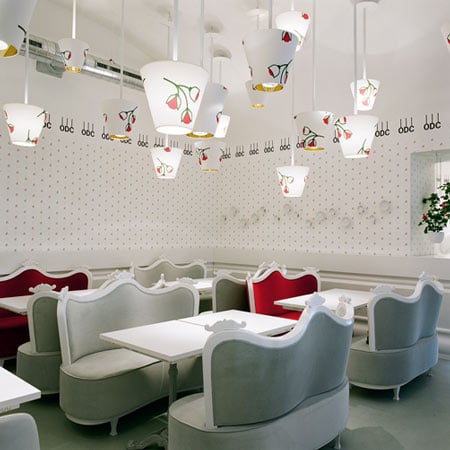
ODC Orlando di Castello by Denis Kosutic
Vienna architect Denis Kosutic has completed the interior of a restaurant in Vienna, Austria, inspired by "Queen Elizabeth, the rapper 50 Cent and a girl from Tyrol".
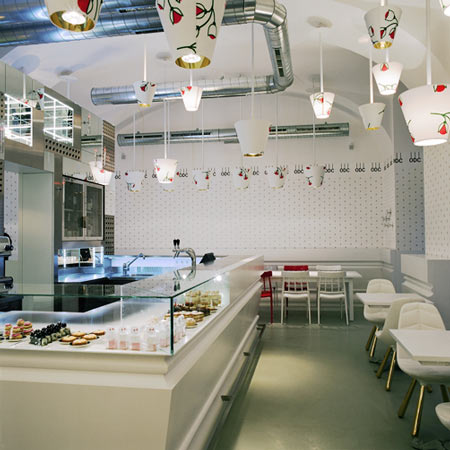
Called ODC Orlando di Castello, the project incorporates custom wallpapers featuring the restaurant's initials, lamp shades with floral patterns and clusters of upholstered furniture.
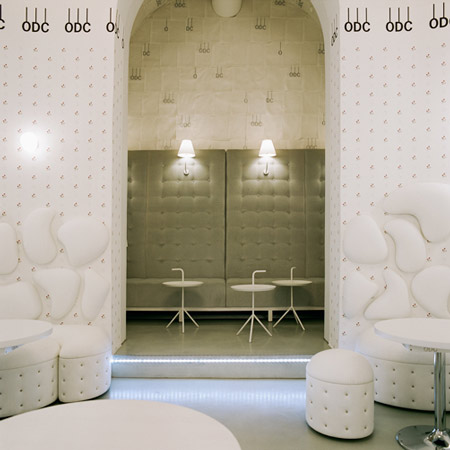
Upholstered pads are scattered over the walls, forming backrests to benches around the edge of one room.
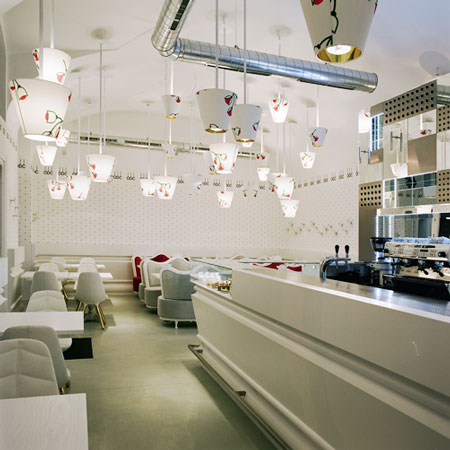
The interior is predominantly white with metallic, reflective elements.
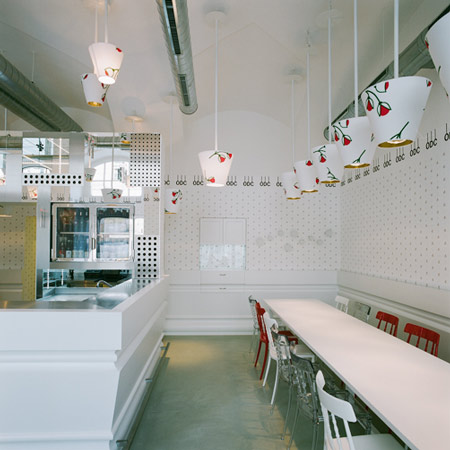
Here's some more information from Denis Kosutic:
--
Orlando di Castello
Restaurant
Freyung 1
A - 1010 Vienna
Concept: Hard Innocence
The idea of uniting the worlds of Queen Elizabeth, the rapper 50 Cent and a girl from Tyrol all in one room and of forming from these associations, which are in contradiction to each other, a new kind of harmonic composition are the dominant factors of the outline.
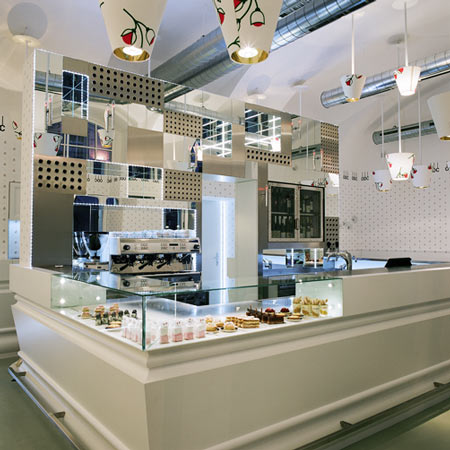
Symbols, such as delicate, stylised little flowers and hard metallic nuts appear in the room in countless versions, thereby making for strong contrasts.
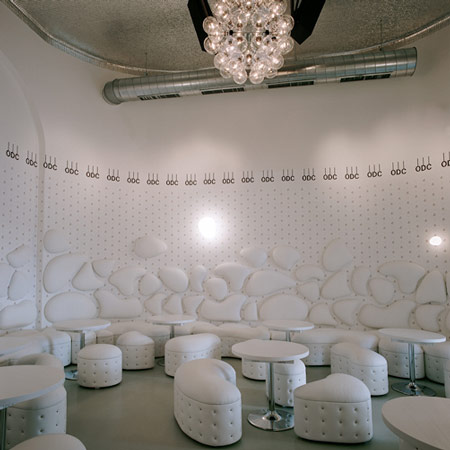
The exciting sense of space appears through the examination of the new proportions: baseboards transform themselves into wall claddings, floor lamps become ceiling lights, panels of fabric divide into small note-like cloths, benches explode into small, kidney-shaped segments.
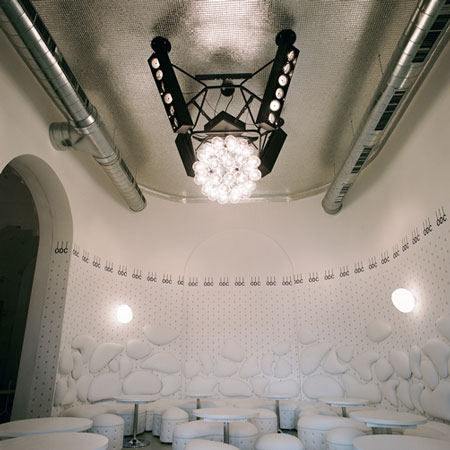
The result of these alienations, often ironic, is a surreal atmosphere full of surprises. White as the dominating room colour, freshly innocent and friendly, has a differentiated and always different effect on various kinds of materials and surfaces.
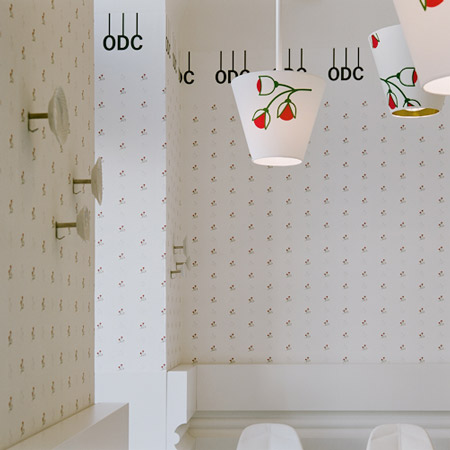
Being in a dialogue with metallic, silver and mirrored hard elements, the white colour repeatedly loses its innocence, thereby having a harder effect.
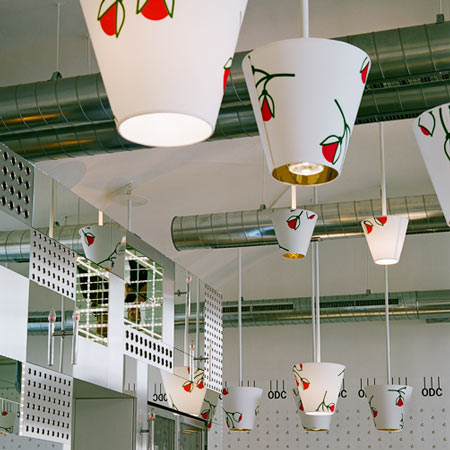
On the other hand, the white background, immersed in warm light, shines with a smooth and golden warmness.
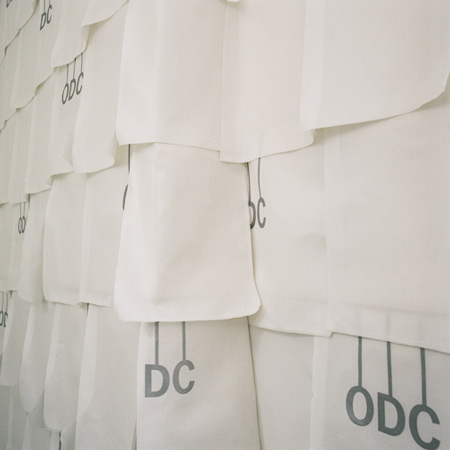
The use of different kinds of seating furniture (shape but also seating comfort) in different room areas creates the intended space separation and zoning.
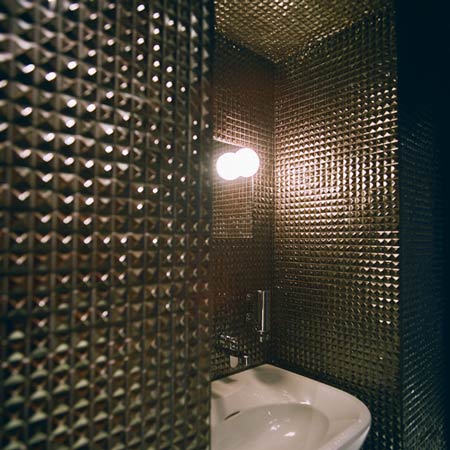
The targeted use of illumination, as well as carefully planned and selected light colours support the atmospheres in particular areas.
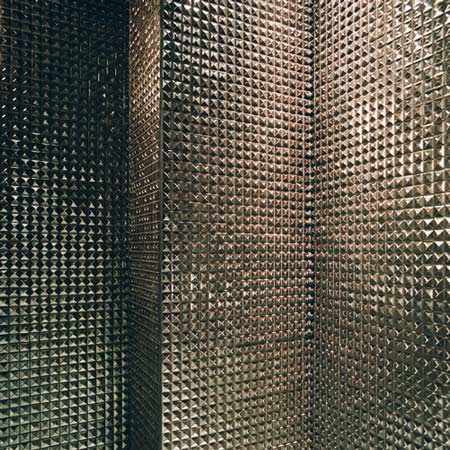
The strong ODC branding appears to be dominant or reserved, characterised or printed on several custom-made objects and surfaces.Here, high-quality handicraft is in direct context with the quality of the brand “Orlando di Castello“.
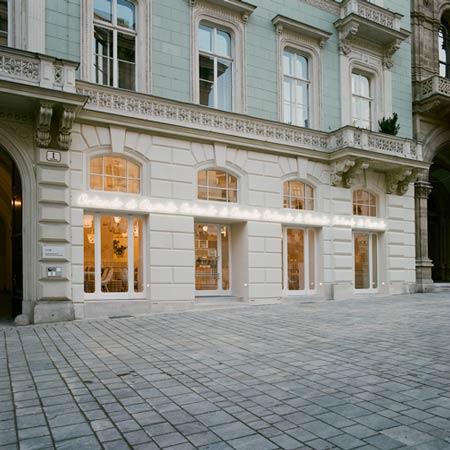
In its distinctiveness, the architecture becomes the carrier of the brand development.

Materials and furniture:
Portals: Historic, refurbished portals, adapted and white lacquered
Flooring: Pandomo
Ceilings and walls: Colour dispersion white
Wallpapers: Custom-made design
Wall claddings and built-in furniture: MDF large-pored veneered (ash) and white matt lacquered
Bar: MDF large-pored veneered and white matt lacquered, premium steel brushed, mirrors, decor plates mirrored, glass, eyelets
Clothes hooks: Schönbuch
Chair: Bonaldo
Chair: Established & Sons
Benches: Custom-made design; wood rack with velvet upholstery
Tables: Custom-made design; MDF large-pored veneered and white matt lacquered
Ceiling luminaires: Custom-made design
Wall luminaires Bar: Custom-made design
LED ribbon lights: Vest
Lounge seating furniture: Custom-made design; white leather manually embossed and riveted
Lounge tables: Custom-made design; MDF large-pored veneered and white matt lacquered
Slabs: Trend Glasmosaik
Long bench: Custom-made design; wood rack with velvet upholstery
Light object Lounge: Flos
Wall luminaires Lounge: Foscarini
Fabric wall cladding: Custom-made design
Side tables: Hay
Wall luminaires long bench: Custom-made design
Slabs: Johnson Tiles
Built-in spotlight: Vest
Sanitary equipment: Flaminia; Vola
Light switches and sockets: Berker
Consultants:
Light planning: Designbüro Christian Ploderer GmbH, Vienna
Corporate Design: Thies Design, Vienna
Local building authorities (ÖBA): Markus Flägner, BWM Architekten und Partner GmbH, Vienna
Act on Coordination of Construction Works (BauKG): Kutzelnig BauKG, Vienna
Statics: DI Gerhard Hejkrlik, Vienna
Housing, ventilation, air conditioning and sanitary planning (HKLS): Altherm Engineering GmbH, Baden
Kitchen planning: Werner F. Redolfi, Vienna
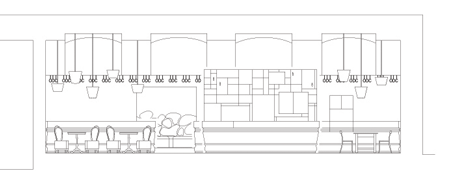
Crafts:
Master builder: Lugner Renovierungen GmbH
Electrical installation: Licht Loidl GmbH, Pinkafeld
HKLS Installation: Licht Loidl GmbH, Pinkafeld
Flooring: Hans Ortner GmbH, Vienna
Painter: A. Kirchner Malermeister GmbH, Vienna
Upholsterer: Kohlmaier GmbH, Wien
Carpenter: Tischlerei Wegerer GmbH, Rettenegg
Luminaires: Vest Leuchten GmbH, Vienna
Drywall installation: A. Kirchner Malermeister GmbH
Access floor: Goldbach GmbH, Baden
Tiler: Fliesen Zenuni, Vienna
Kitchen: Methos GmbH, Innsbruck
Refrigeration technology: KLG Austria, Graz
Furniture: Hans Taus Wohnungs- und Büroeinrichtungen GmbH, Vienna
Furniture: Mood Einrichtungs- und Planungs GmbH, Vienna
Furniture: Desta Stahlmöbel Handels GmbH, Vienna
Furniture: 1000 Tische und Stühle, Vienna
Sanitary equipment: Arreda GmbH, Vienna
Construction carpenter: Beranek & Co GmbH, Vienna
Glazier: Coby Glas, Vienna
Media technology: BigScreen Handels GmbH, Linz
Lift: Meisteraufzüge GmbH, Prellenkirchen
Locksmith: Stahlbau Gnadenberger, Ziersdorf
Foot mats: Scheybal GmbH, Vienna
Foils: Trevision GmbH, Grosshöflein
Wallpaper printing: Viennaprint Display- und Digitaldruck Handels GmbH, Vienna
Neon writing: Neon Line Werbedesign GmbH, Vienna
Alarm system: Fuchs Alarm Sicherheitstechnik GmbH, Markt Piesting
Fire extinguisher: Jamal Feuerlöscherbau GmbH
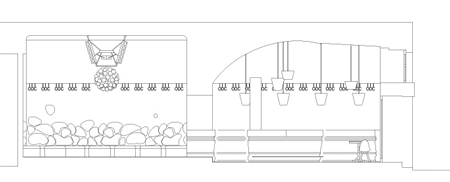
Architecture: Denis Kosutic
Data:
Area: 420 m2
Start of planning: October 2008
Start of construction: June 2009
Completion: August 2009
Building contractor: Palais Gastronomie GmbH, Vienna
Employee: Mareike L. Kuchenbecker (project management), Carina Haberl, Judith Wölkl, Matteo Trentini
Photographer: Lea Titz
Task: Planning and rebuilding of a restaurant in the city centre of Vienna